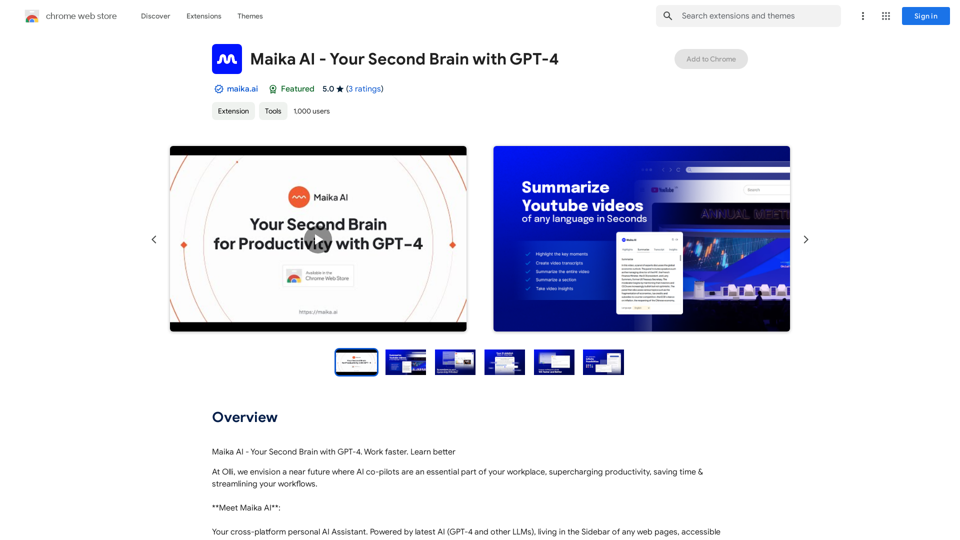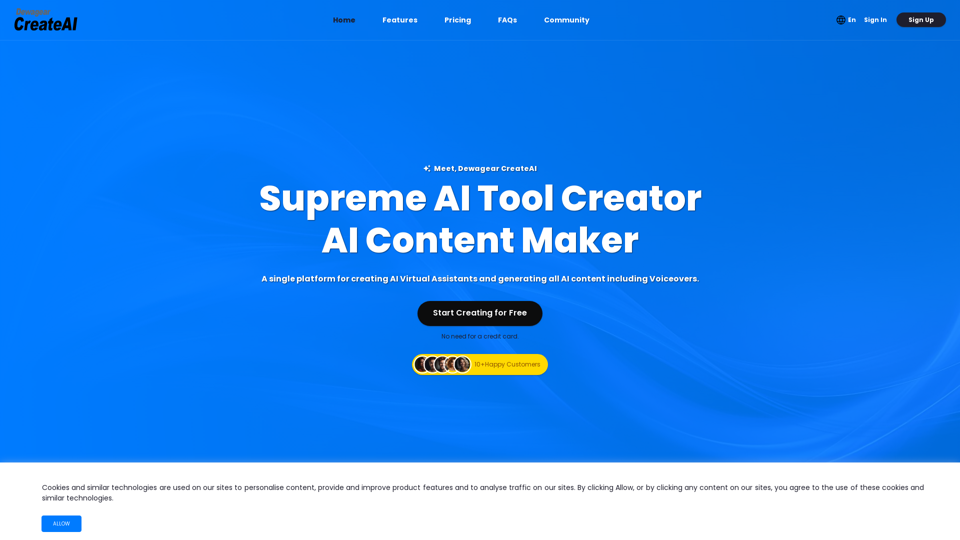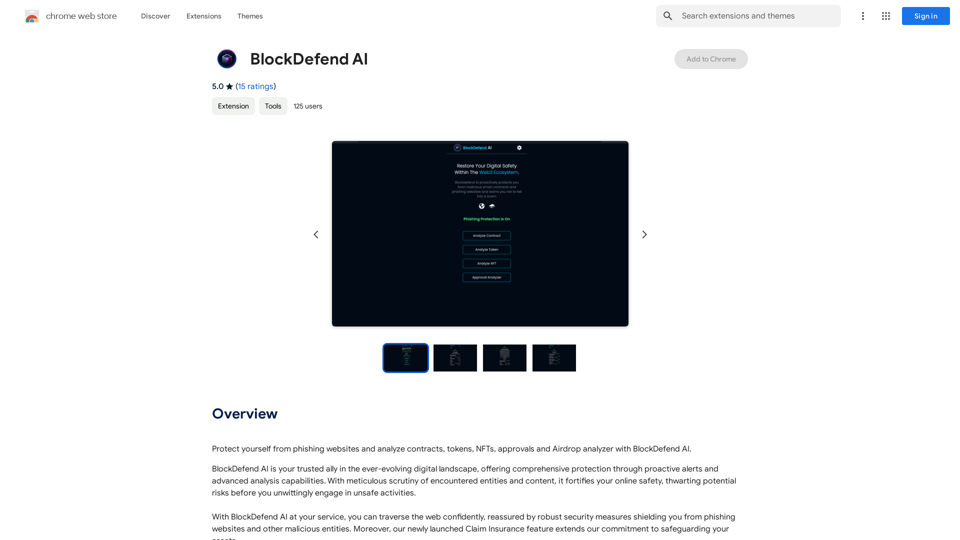Keywording is a Chrome extension designed to streamline the process of adding keywords to images on stock photography websites like Alamy and Getty. This AI-powered tool automatically generates captions and keywords for images, allowing users to quickly insert them into their portfolio managers. It's a free, user-friendly solution that aims to increase efficiency for photographers and stock image contributors.
jKeywording | Stock Photo Keyword Generator
Adds a right-click menu to images, allowing users to easily add keywords to stock photos on websites like Alamy and Getty.
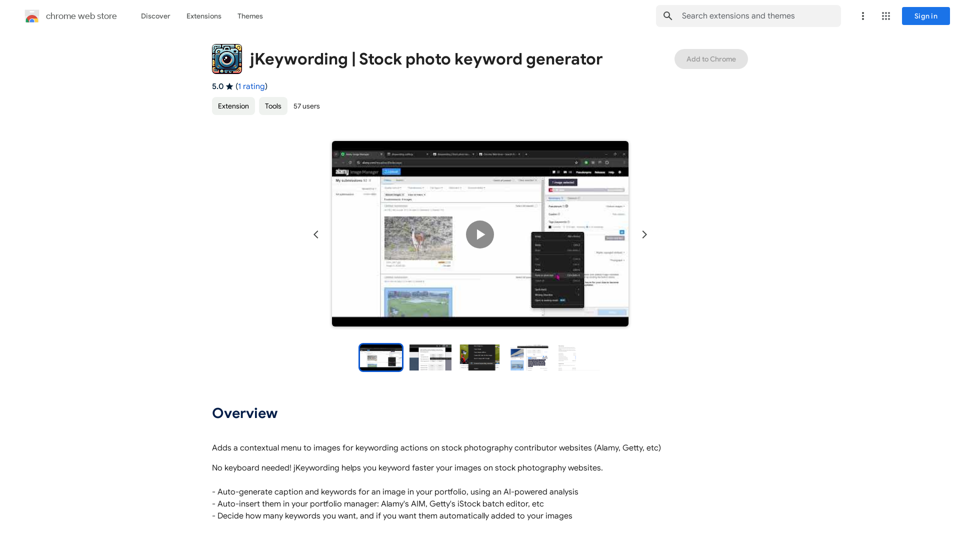
Introduction
Feature
AI-Powered Caption and Keyword Generation
Keywording utilizes advanced AI technology to analyze images and automatically generate relevant captions and keywords. This feature saves time and enhances the quality of image descriptions.
Auto-Insert Functionality
The extension can automatically insert the generated keywords into popular portfolio managers, such as Alamy's AIM and Getty's iStock batch editor. This streamlines the workflow for stock photographers.
Customizable Keyword Generation
Users can specify the number of keywords they want to generate for each image. This flexibility allows for tailored results based on individual needs or platform requirements.
Free to Use
Keywording is completely free, with no subscription fees or usage limitations. This makes it accessible to all photographers, regardless of their budget or volume of work.
Compatible with Major Stock Photography Platforms
The extension is designed to work seamlessly with popular stock photography websites, including Alamy and Getty, making it a versatile tool for contributors to multiple platforms.
User-Friendly Interface
With a simple installation process and intuitive operation, Keywording is easy to use for both beginners and experienced stock photographers.
Editable Results
While the AI generates keywords automatically, users have the ability to review and edit the suggestions, ensuring accuracy and relevance to their specific images.
FAQ
How does Keywording work?
Keywording uses AI-powered analysis to automatically generate captions and keywords for your images. After installation, you select the images you want to keyword, and the extension processes them to provide relevant descriptions and tags.
Is Keywording really free to use?
Yes, Keywording is entirely free. There are no subscription fees, hidden costs, or usage limitations. You can use the extension as much as you need without any charges.
Can I customize the keywords generated by Keywording?
Absolutely. While Keywording automatically generates keywords, you have full control to review and edit them. This ensures that the final keywords accurately represent your images and meet your specific requirements.
Which stock photography platforms does Keywording support?
Keywording is designed to work with major stock photography websites, including Alamy and Getty. It's compatible with portfolio managers like Alamy's AIM and Getty's iStock batch editor.
How can Keywording improve my workflow as a stock photographer?
Keywording can significantly speed up your image tagging process by automatically generating relevant keywords and captions. This saves time, increases efficiency, and potentially improves the discoverability of your images on stock photography platforms.
Latest Traffic Insights
Monthly Visits
193.90 M
Bounce Rate
56.27%
Pages Per Visit
2.71
Time on Site(s)
115.91
Global Rank
-
Country Rank
-
Recent Visits
Traffic Sources
- Social Media:0.48%
- Paid Referrals:0.55%
- Email:0.15%
- Referrals:12.81%
- Search Engines:16.21%
- Direct:69.81%
Related Websites
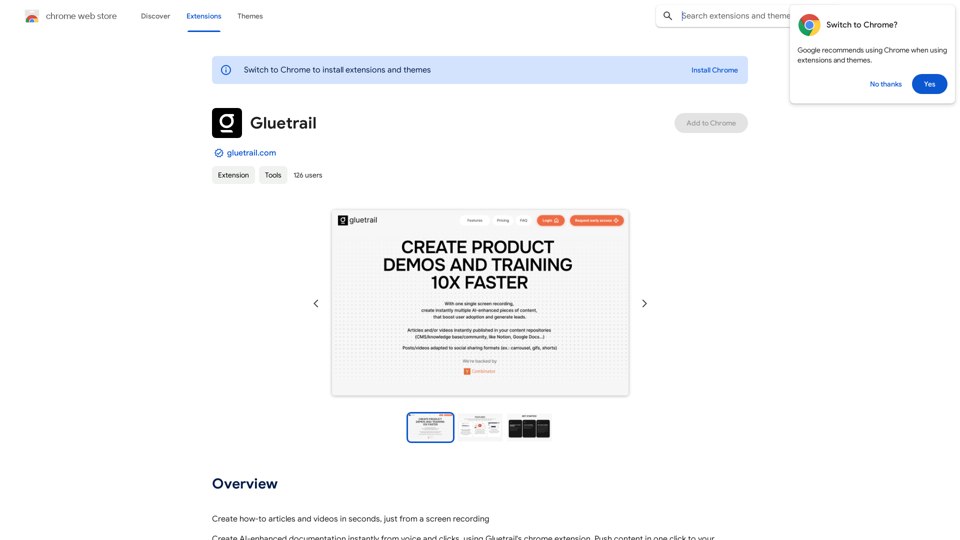
Turn Screen Recordings into How-To Content in Seconds! Tired of spending hours editing videos for tutorials? Introducing [Your Product Name]! Our revolutionary tool lets you instantly transform your screen recordings into professional-looking how-to articles and videos. Here's how it works: 1. Record your screen: Capture your steps clearly and concisely. 2. Upload to [Your Product Name]: Our AI does the heavy lifting. 3. Get your content: Choose from automatically generated articles or polished videos, ready to share! [Your Product Name] is perfect for: * Educators: Create engaging online lessons. * Businesses: Train employees efficiently. * YouTubers: Boost your content creation speed. Stop wasting time editing. Start creating with [Your Product Name]!
193.90 M
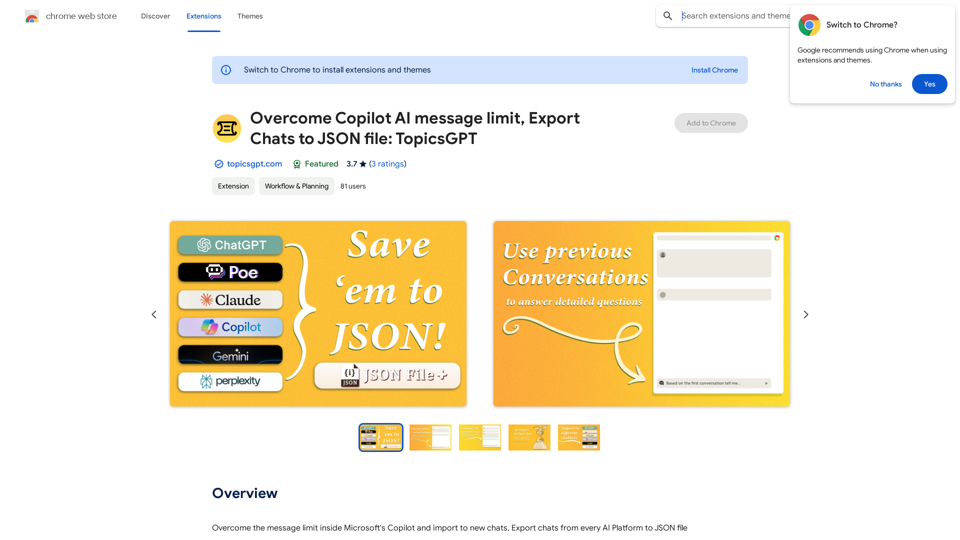
Overcome Copilot AI Message Limit, Export Chats to JSON File: TopicsGPT This is a tool to help you work around the message limit in Copilot AI and export your conversations to a JSON file. Here's how it works: * Extend Your Conversations: TopicsGPT allows you to continue your conversations with Copilot AI beyond the usual message limit. * Save Your History: Export your entire chat history with Copilot AI as a structured JSON file. This makes it easy to review past interactions, analyze your conversations, or even use the data for other purposes. Benefits: * No More Interruptions: Keep your creative flow going without worrying about hitting the message limit. * Organized Data: Have a clear and organized record of your conversations with Copilot AI. * Flexibility: Use the exported JSON data for your own projects or analysis. Let me know if you have any questions!
Overcome Copilot AI Message Limit, Export Chats to JSON File: TopicsGPT This is a tool to help you work around the message limit in Copilot AI and export your conversations to a JSON file. Here's how it works: * Extend Your Conversations: TopicsGPT allows you to continue your conversations with Copilot AI beyond the usual message limit. * Save Your History: Export your entire chat history with Copilot AI as a structured JSON file. This makes it easy to review past interactions, analyze your conversations, or even use the data for other purposes. Benefits: * No More Interruptions: Keep your creative flow going without worrying about hitting the message limit. * Organized Data: Have a clear and organized record of your conversations with Copilot AI. * Flexibility: Use the exported JSON data for your own projects or analysis. Let me know if you have any questions!Bypass Copilot's Message Limit and Move Conversations * Get around the message limit in Microsoft's Copilot: Find ways to exceed the character or message count restrictions within Copilot. * Transfer conversations to new chats: Move existing conversations from one chat space to another. Export AI Chat Histories * Download chat history from any AI platform: Save your conversations with various AI systems as JSON files.
193.90 M
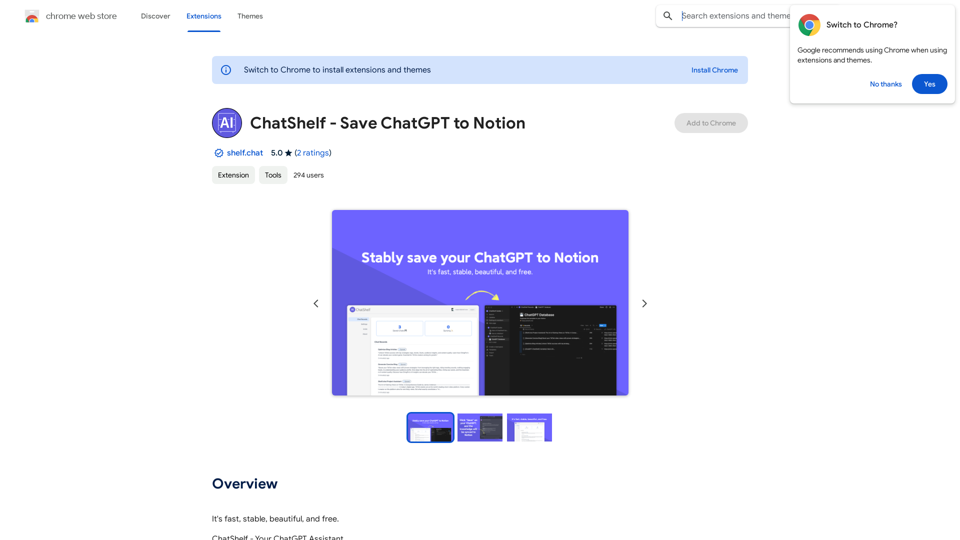
ChatShelf - Save ChatGPT to Notion ChatShelf is a tool that lets you save your ChatGPT conversations directly into Notion. It's a simple way to keep track of your AI interactions and use them later. Just copy the link to your ChatGPT conversation and paste it into ChatShelf. It will then extract the conversation and create a Notion page for you.
ChatShelf - Save ChatGPT to Notion ChatShelf is a tool that lets you save your ChatGPT conversations directly into Notion. It's a simple way to keep track of your AI interactions and use them later. Just copy the link to your ChatGPT conversation and paste it into ChatShelf. It will then extract the conversation and create a Notion page for you.It's fast, stable, beautiful, and free.
193.90 M
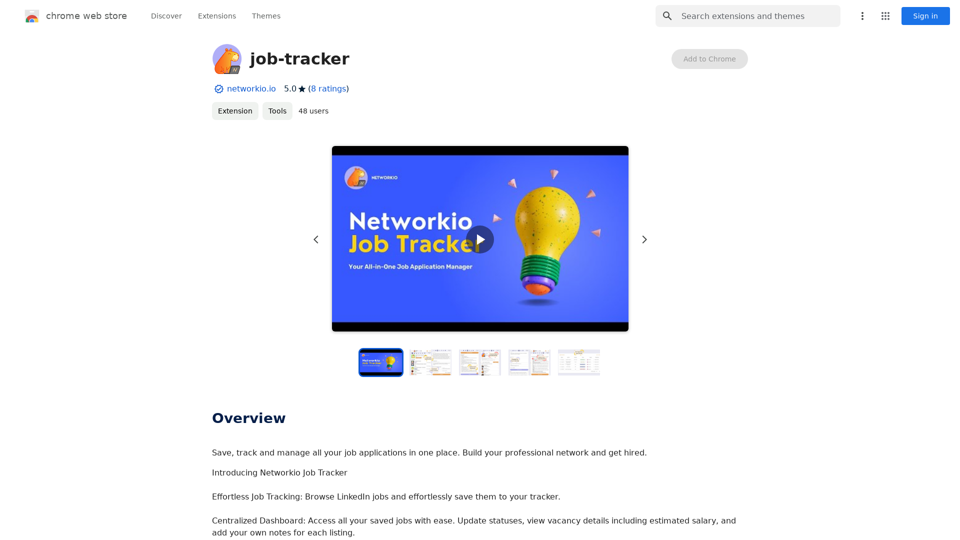
Save, track, and manage all your job applications in one place. Build your professional network and get hired.
193.90 M
